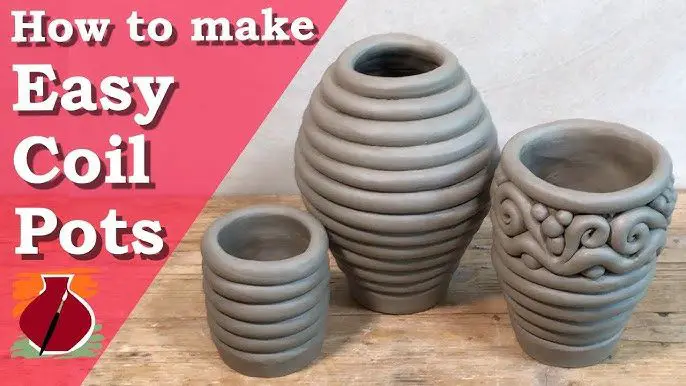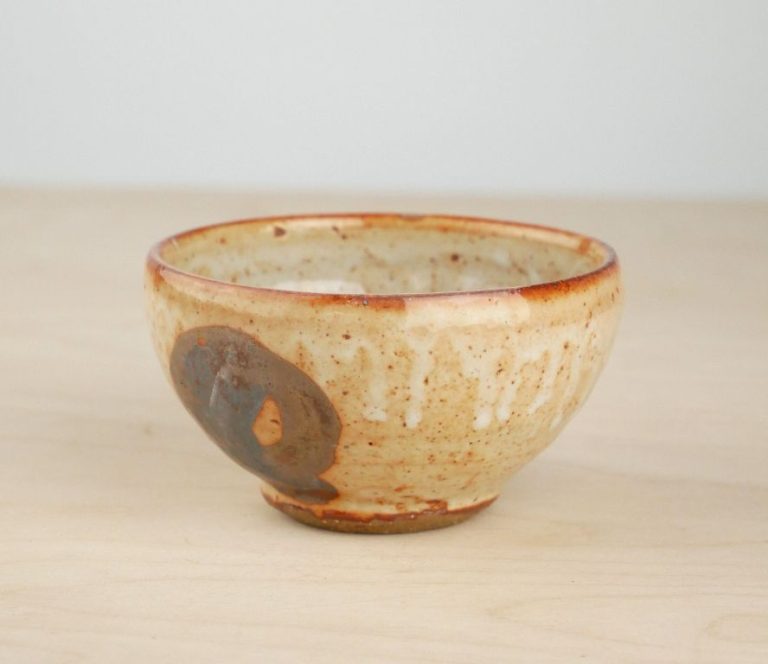How Do You Get Snake Skin Texture On Clay?
Snake skin texture is a popular decorative effect for polymer clay and other modeling clays. The realistic, reptilian texture adds visual interest and unique natural-looking patterns to clay sculptures, jewelry, dishes, coasters, and more. Recreating the look of snake skin in clay is an easy DIY texturing technique that crafters of all levels can master.
Snake skin patterns form from the scales that cover a snake’s body. The small, overlapping scales create a tessellated texture of polygons. By imprinting or carving small geometric shapes into the surface of clay, it’s possible to mimic the appearance of actual snake skin. The resulting texture brings an organic, exotic look to clay projects.
Creating snake skin texture on polymer clay involves using simple tools to make impressions in the clay. The process allows complete control over the size and arrangement of the polygon shapes. Once perfected on a base, the textured clay can be used to cover jewelry pieces, sculpted objects, or any other clay project needing some slithery style.
Gather Materials
The first step in creating snake skin texture on clay is gathering the right materials. The type of clay you use is crucial for achieving a realistic snake skin effect. Here are some of the best clay options:
Polymer Clay – Polymer clay, like Sculpey or Fimo, is very versatile for sculpting detailed textures. It softens when conditioned, allowing you to press the snake skin pattern easily. Polymer clay holds fine details well once baked.
Apoxie Clay – Apoxie clay is also excellent for sculpting textures. It’s a two-part epoxy clay that air dries into a strong, durable finish. The smooth consistency is great for sculpting snake scales.
Air Dry Clay – Some air dry clays, like Amaco’s Claytoon, can also achieve a snake skin look. Let the forms fully dry and seal properly to preserve the texture. Air dry clay is an affordable option.
In addition to clay, have textured items on hand like faux snake skin, silicone molds, or real snake sheds. These can imprint patterns into the clay. Smooth sculpting tools are also useful.
Create the Base Form
Before adding the snake skin texture, you need to shape the basic clay form. Start with a smooth, even slab of air-dry, polymer, or pottery clay. The thickness will depend on your preference and desired usage. Thicker slabs, around 1⁄4 inch or more, work well for dishes, wall art panels, and textured jewelry pieces.
Roll, press, and mold the clay into your desired shape. You can make free-form organic shapes, geometric forms, bowls, tiles, or anything you like. Shape the sides and corners neatly and smooth any fingerprints or imperfections. Let the clay firm up slightly before texturing if it feels too soft and sticky.
At this stage, you just want a clean, smooth clay base to work on. Avoid adding any embellishments yet. The snake skin texture will be applied next to transform the plain form into a realistic reptilian creation.
Create the Snake Skin Pattern
To create a realistic snake skin texture on polymer clay, there are a few techniques you can use:
– Use a real snake skin as a stamp. Carefully press the skin into the clay, wiggling slightly to imprint the detailed scales. You’ll get an extremely accurate pattern this way.
– Roll out a piece of clay and use a clay sculpting tool, dull knife, or toothpick to carve diagonal lines that mimic the shape and size of snake scales. This takes some practice, but allows customization.
– Press a netting, mesh, or burlap texture into the clay. The crossing strands will leave an interlocking diamond pattern that resembles scales. Experiment with distorting the netting first to get appropriately sized scales.
– Use a custom textured roller or stamp. You can find various snake skin rollers and stamps made for imprinting patterns into polymer clay. These make replicating scales very easy.
– Cut textured vinyl flooring into pieces and press them into the clay as custom stamps. The crossover grout lines often produce great scale patterns.
Refine the Texture
Once you’ve created your basic snake skin texture, it’s time to refine it and add more realistic details. Use small sculpting tools to smooth out any rough areas and soften hard edges in the texture. You can also use toothpicks, skewers, or other thin tools to carve and define individual scales. Where the scales meet each other, etch deeper creases with your tools to create the subtle uneven outlines of real snake skin.
Use a textured sponge or scrunched up plastic wrap to stipple the surface, softening some of the hard edges and peaks created on the first texturing pass. This will help give an aged appearance to the skin. Consider scratching out some damage to the skin here and there with a small knife tip to mimic real textures.
Target any areas with over-defined details that read more like human fingerprints and imperfections. You want this to read as snake and not as clay, so refine the details to appear more organic. If needed, smooth out the surface and reapply the texture, learning from your first pass at making it look authentic.
By carefully controlling how and where you remove clay, add texture, stipple, etch and scratch the surface, you can bring out a lot of realism with patience and deliberate focus. Don’t rush over this step, as the details make or break the final effect.
Add Realistic Snake Skin Colors
When adding color to your faux snake skin clay sculpture, opt for paints and glazes that will give a realistic, natural look. Some great options include:
- Acrylic paints – These give good coverage and depth of color. Mix colors to match real snake species.
- Alcohol inks – These concentrated inks work nicely for intricate details and color variations when blended.
- Resin tints – Adding a small amount of resin dye to epoxy resin can create a thick glaze to mimic shiny snake skin.
- Chalk pastels – Grind pastels into a powder to make a colored powder you can paint on. Seal it after for permanence.
When applying color, consider doing a base coat of the overall dominant color, then use other paints, inks, pastels etc for detailing. Study snake skin color patterns to create realism. Finish with a satin varnish for sheen.
8. Seal and Protect
Once your snake skin clay piece is fully decorated and dried, it’s important to seal and protect it. Clay is naturally porous and can get dirt trapped in it without any protective sealant. Sealing also brings out more color vibrancy and gives it an extra glossy look.
Some of the top sealants recommended by professional polymer clay artists include:
-
Polymer clay glaze – Gives pieces a thick coating for extra protection and high-gloss shine.
-
Matte acrylic spray – Provides a durable, non-glossy finish.
-
Gloss acrylic spray – Waterproof, fast-drying transparent coating.
-
Water-based polyurethane – Used for jewelry pieces. Offers high-gloss protection.
Apply at least 2-3 thin coats of your sealant of choice, allowing each coat to fully dry in between. Multiple thin coats are better than 1-2 thick coats. This ensures complete coverage and protection.
Troubleshooting
Sometimes creating a snake skin texture on polymer clay doesn’t go as planned. Here are some tips for fixing common issues:
Fixing Cracks
Cracks can form while baking if the clay is too thin or conditions are too hot. To fix:
- Sand cracks gently with fine grit sandpaper to smooth edges
- Work a thin “clay glue” of liquid polymer clay into the cracks
- Apply strips of fresh clay over cracks, blending edges into surrounding clay
- Bake again at slightly lower temp/shorter time
Adding clay glue and fresh clay layers should fill in cracks nicely. Allow thorough drying time before additional baking.
Inspiration
Snake skin clay art can produce incredibly realistic and beautiful pieces. Artists have used this technique to create stunning clay sculptures, jewelry, pots, and more. Here are some great examples of snake skin patterns on polymer and air-dry clays:
- This coiled snake sculpture has incredible texture and detail that mimics real snake skin. The colors and shapes are very true-to-life.
- These snake skin clay earrings use subtle tones of brown, black, and white to recreate the look. The patterning across each piece looks natural.
- This creator made a gorgeous clay pot with red and black snake skin patterning. It’s an eye-catching way to display plants or trinkets.
- Snake skin clay can also be used for jewelry like this beautiful bracelet. Using multiple colors of clay allows for a colorful reptilian look.
These examples demonstrate the realism and artistry possible when working with snake skin clay. From home decor to wearable art, the variations are endless. These pieces should provide plenty of inspiration for your next snake skin clay project!
Conclusion
In summary, to achieve a realistic snake skin texture on polymer clay, the key steps are creating a base form such as a bracelet or figurine, imprinting a pattern into the clay, refining the texture with tools, adding color with acrylic paints or inks, sealing the piece with a finish, and finally, protecting it from damage. With some trial and error to perfect your technique, this versatile craft material makes beautifully detailed snake skin designs accessible even for beginner artisans.
The finished textured clay artwork results in a remarkably convincing and attractive faux snake skin pattern that can elevate jewelry, sculptures, household décor, and more. Mastering the process requires some initial practice, but allows room for creativity in colors, shapes, sizes and refinement methods. For inspiration, search online to admire snakes with diverse markings and explore how other clay artists have incorporated snake skin motifs into their designs. With an eye for beauty from the natural world and steady hands, anyone can achieve a radiant snake skin finish on their clay creations.




